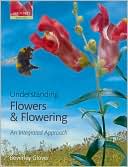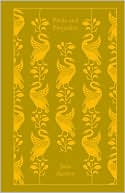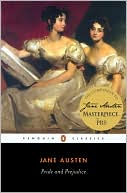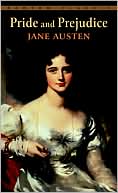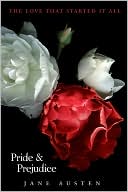Understanding Flowers and Flowering: An Intergrated Approach
Search in google:
Flowers are the beautiful and complex reproductive structures of the angiosperms, one of the most diverse and successful groups of living organisms. The underlying thesis of this book is that to fully understand plant development (and why flowers differ in shape, structure and color), it is necessary to understand why it is advantageous for them to look like they do. Conversely, in order to fully understand plant ecology, it is necessary to appreciate how floral structures have adapted and evolved. Uniquely, this book addresses flowers and flowering from both a molecular genetic perspective (considering flower induction, development and self-incompatibility) and an ecological perspective (looking at the selective pressures placed on plants by pollinators, and the consequences for animal-plant co-evolution). Understanding Flowers and Flowering first considers the evolution of flowers and the history of research into their development. This is followed by a detailed description of the processes which lead to flower production in model plants. The book then examines how flowers differ in shape, structure and color, and how these differences are generated. Finally it assesses the role of these various aspects of floral biology in attracting pollinators and ensuring successful reproduction. In so doing, it provides the first truly integrated study of the topic - one that discusses both the how? and why? of flowering plant reproductive biology. The breadth of coverage and integrated approach makes this advanced textbook an ideal choice for anyone interested in any aspect of floral biology. It will be particularly suitable for graduate level students taking courses in plant development, ecology, evolution, and reproductive biology.
Preface vIntroduction 1The Evolution of Flowers 3The origin of flowering plants 3Early reproductive structures 7The first flowers 7Floral diversification 8Historical Interpretations of Flower Induction and Flower Development 10The foliar theory of the flower 10The foliar theory in an evolutionary context 15The transition to flowering 15Developmental explanations of floral induction 16Environmental explanations of floral induction 16The florigen problem 19The Molecular Mechanisms of Flowering: Induction and Development 21Induction of Flowering 23Flower Induction in Arabidopsis thaliana 25Arabidopsis thaliana as a model system for the study of flowering 25Flowering-time mutants 30The Autonomous Pathways for Floral Inhibition and Induction 35The floral inhibition pathway 35The autonomous induction pathway 39Other endogenous factors which influence flowering time 41The Photoperiodic Pathway of Floral Induction 43Sensing daylight 43Measuring time 48Integrating light and clock signals 50The Vernalization Pathway of Floral Induction and the Role of Gibberellin 52The vernalization promotion pathway 52The gibberellin promotion pathway 56Does gibberellin act in the vernalization promotion pathway as well as independently? 58Integrating the Arabidopsis thaliana Flower Induction Pathways and Assessing the Extent to Which the Model Is Ubiquitous 59Integrating the flowering-time pathways 59The Arabidopsis flowering-time model in other species 64Development of Flowers 69Changes at the Shoot Apical Meristem in Response to Floral Induction 71Physiological changes at the shoot apical meristem 71Shoot apical meristem anatomy 72Gene expression patterns in the shoot apical meristem 73Floral meristem identity genes act downstream of the flowering-time integrators 74Floral meristem identity genes 74Development of the Floral Organs 83The original ABC model of flower development 83The role of D function genes 90The role of E function genes 90The role of cadastral genes 92The quartet model of organ identity 94The ABC Model in Evolution 95Evolutionary history of MADS box transcription factors 95ABC model in gymnosperms? 96ABC model in monocots? 98Variations on the ABC model 101Function and Development of Gametophytes 103Alternation of generations in multicellular organisms 103The angiosperm female gametophyte 105The angiosperm male gametophyte 107Events following pollination 109Preventing Self-fertilization 111Reducing self-pollination in a hermaphroditic flower 111Monoecy 113Dioecy 114Self-incompatibility (SI) 115Sporophytic self-incompatibility (SSI) 116Gametophytic self-incompatibility (GSI) 119Heteromorphic self-incompatibility 120Pollination Success: Molecular and Ecological Interactions 123How and Why Does Floral Form Vary? 125Why Are Flowers Different? Pollination Syndromes-The Theory 127Cross pollination 127Abiotic pollen vectors 127Biotic pollen vectors 129Principles underlying the pollination syndrome concept 129The pollination syndromes 130Changing Floral Shape and Structure 138Changing corolla size 138Changing corolla symmetry 140Changing petal shape 143Generating a composite inflorescence 145Colouring the Flower 147Colour as a signal 147Plant pigments 148Carotenoid synthesis 149Flavonoid synthesis 151Betalains 156Enhancing Flower Colour 158Mixing pigments 158Co-pigmentation 158Regulation of pigment distribution 159The effects of metal ions 162The importance of pH 163The role of petal cell shape 165The Influence of Pollinators on Floral Form 169Are Flowers under Selective Pressure to Increase Pollinator Attention? 171Competition for pollinator attention 171Facilitation of pollination 172Techniques for investigating the role of pollinator attention in limiting fitness 172Evidence based on fruit and seed set following hand pollination 175Evidence from mixed species plots 176Analysis of character traits potentially displaced by pollination competition 177Do Pollinators Discriminate between Different Floral Forms? 181What pollinators see 181What pollinators sense in other ways 183Discrimination between petals of different colours 184Discrimination between corollas of different sizes 189Discrimination between zygomorphic and actinomorphic flowers 190Discrimination between flowers with different petal cell shapes 190Discrimination between flowers on the basis of scent 191Pollination Syndromes-The Evidence 192Historical context 192Putting the assumptions together 193Evidence for pollination syndromes 195Evidence against pollination syndromes 197The most effective pollinator? 198Epilogue 201References 203Index 223
